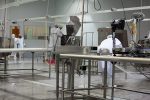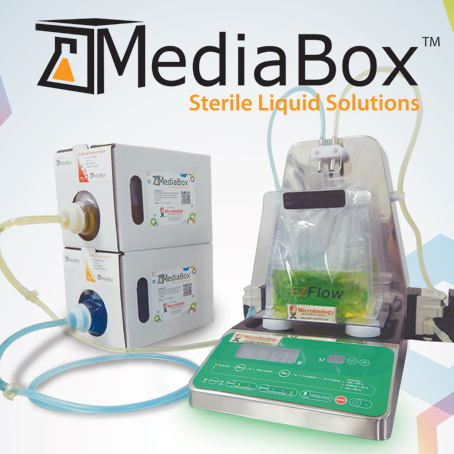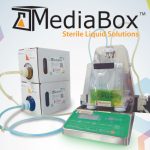The food and beverage industry is moving towards a fully connected production system with more methods available to automate data collection than ever before. But with all the promises of Industry 4.0, what are the true capabilities of communicating real-time plant floor insights? This article will explain how better capturing methods and analysis can drive data-driven decision making to optimize safety, quality and efficiency in food and beverage operations.
What Is Industry 4.0?
The term Industry 4.0 has many pseudonyms, such as Industrial Internet of Things, Manufacturing 4.0, and Smart Manufacturing, but they generally all refer to the idea that manufacturers will be able to connect all operations in their plants. Where the name Industry 4.0 comes into play is the thought that manufacturing is in its fourth wave of change. In the 1780s, the first industrial revolution started with machines and the “production line” and evolved to mass production in the 1870s; manufacturing entered into a new wave after the 1950s when automation was introduced.
In this current fourth wave of manufacturing, new technology is driving the change in production and the capabilities of what can be accomplished in facilities. A report from Deloitte Insights entitled “The Smart Factory” explains this new way of operations as “ a leap forward from more traditional automation to a fully connected and flexible system—one that can use a constant stream of data from connected operations and production systems to learn and adapt to new demands.”
By way of more sensors, connectivity, analytics, and breakthroughs in robotics and artificial intelligence, the future food and beverage plants will be able to meet customers’ demands for higher-quality products while increasing productivity. However, there is a stark reality that many food and beverage manufacturing facilities are over 50 years old and dealing with legacy equipment. And if an investment in new technology is made, often it is made because food and beverage plants need to reach compliance or fill a customer’s requirement.
“Regulatory compliance is huge,” says Steve Hartley of Matrix Control Systems during a recent SafetyChain webinar. “But if you are able to attach additional business value to that compliance, then incorporating technology into the organization becomes a lot easier.”
For instance, new technology that can help a facility follow regulated processes in food manufacturing can also help to create more consistency and increase the quality of your products. Additionally, if input from the entire organization is collected when investing in more technology and automation, then multiple departments will support the budget costs.
“One of the big things that we see happening with our customers is that they are digging into that production equipment,” says Hartley. “Lots of food manufacturing facilities are filled with all sorts of wonderful processing equipment, but leveraging not only the manufacturing capabilities, but also the data collection capabilities of that equipment is really powerful.”
What Automated Data collection Systems Can Do
Because large food and beverage companies sell a high volume of goods to a large number of customers, many have already automated their data collection. These facilities also receive goods from an intricate supply chain that spans vast distribution networks, thus making automated data collection from receiving all the way through shipping a necessity.
However, many companies are going beyond this and integrating production equipment on the plant floor to provide a deeper level of production and quality data. These types of operations are generally interested in going beyond just being in regulatory compliance, but working on their continuous improvement. What this data can do is to provide better data for better decision making. By knowing what parts of the plant are operating optimally and what areas aren’t, plant managers can to make changes that will unlock more potential from the production line.
Getting the most out of operations is one of the most frequently cited needs of food and beverage manufacturers. The best way to do this is to drive plant efficiencies, which means measuring performance, setting baselines and goals, and holding employees accountable. The key here is to not confine efficiencies to just one area of the facility, but to broaden the scope to include end-to-end processes, from supplier to customer.
“Take a scope that is relevant to everyone and that is relevant to the strategy of the company,” states Daniel Campos of London Consulting Group. A company’s overall strategy should drive the focus of all departments. No one lives in a silo, and every part of your operations affects all the other parts. So any one area that is falling below the goal set takes away value from the system as a whole. This becomes more crucial as the enterprise grows even more connected and dependent on data from each other.
Shortfalls of Industrial Automation Systems
When evaluating the scope of an operation, all areas of the plant should be assessed in terms of how data is being collected. Part of this information assessment is to learn what processes aren’t covered by automated data collection. This includes equipment without sensors that can record accurate measurements and readings.
Another area that should be identified as an entry point for possible faulty or incorrect data is where an operator is required to input information. Some of this might be simply validating that SOPs were followed, such as whether a piece of equipment was cleaned or not and if detergents were actually changed when required.
The quality and fidelity of the data is directly related to the effectiveness of the decisions made. As the saying goes, “Garbage in, garbage out.” But even good data alone doesn’t drive value, but rather information gleaned from the facts collected is where the true benefits can be harnessed to improve the food safety and quality of products produced.
So, if data is analyzed and found not to conform to a desired specification, then the goal is to find out why this is happening. Is the data being collected accurate? If not, why? If it is accurate, then what else is going on?
Additionally, the speed and complexity of today’s food processing plants requires this data to not just be in real time, but able to be captured in smaller increments to make better decisions. This type of data that is collected and analyzed infrequently can slip through the cracks because systems to collect and manage this category can be hard to find, unlike industrial automation systems.
One solution to this problem can be found in capturing data via mobile devices. Tablets and phones moving through the plant with operators can help collect information at the source. Plus, these devices enable managers and executives to see critical control point data as well as summaries of operational performance and out-of-spec occurrences, anytime and anywhere.
As food and beverage manufacturing plants continue to automate their data collection and increasingly connect their production processes, more data will come online in a multitude of ways, allowing for better decision making. Ultimately, this is the promise of Industry 4.0 and why digital transformation promises a higher level of food safety and quality in the future.





















